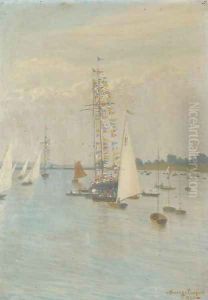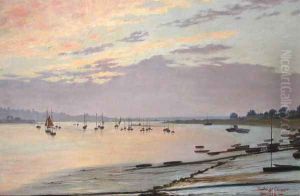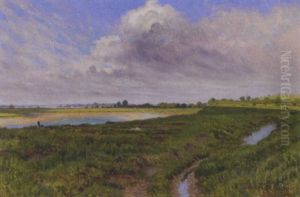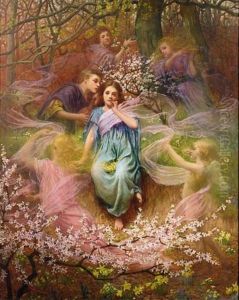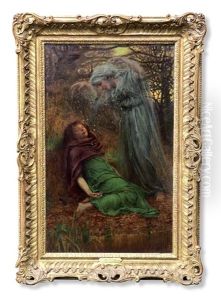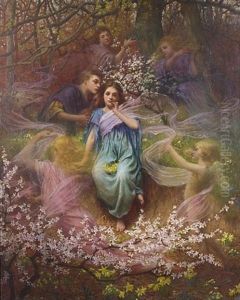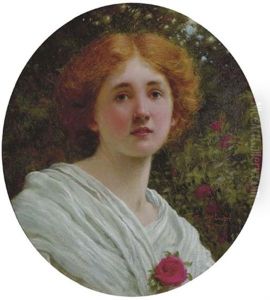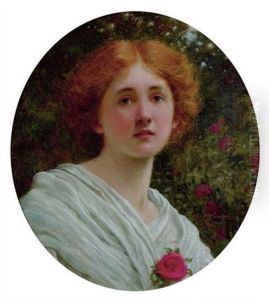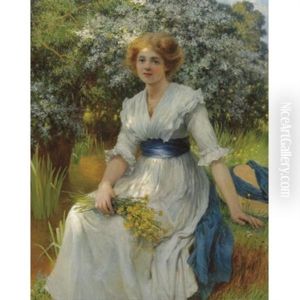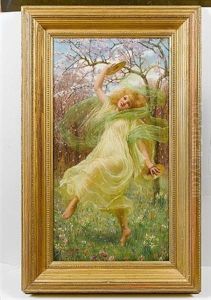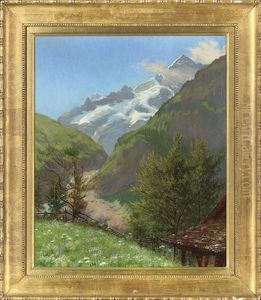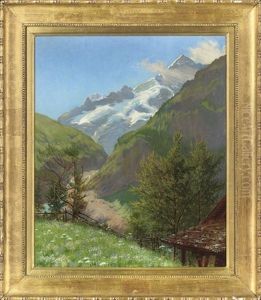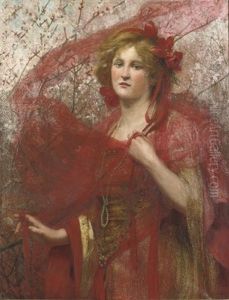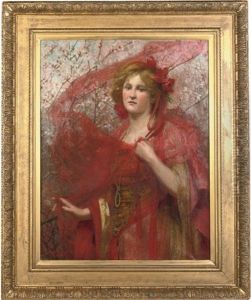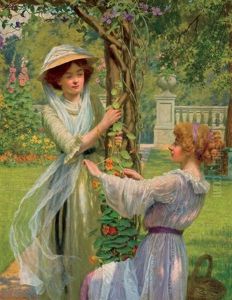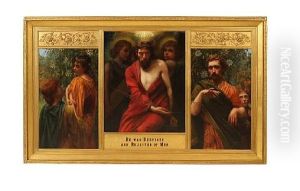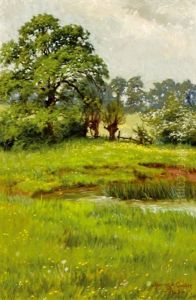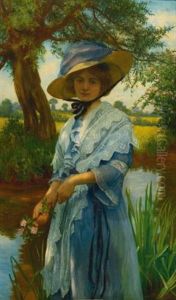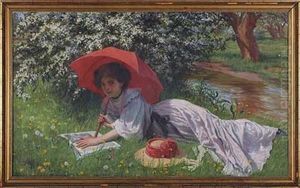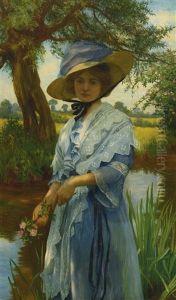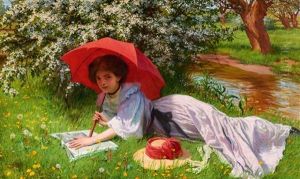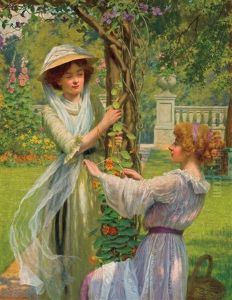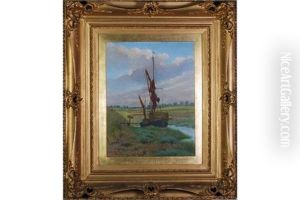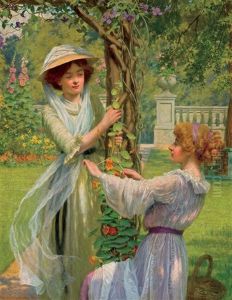W. Savage Cooper Paintings
W. (William) Savage Cooper was a British artist born in 1856, known for his contributions to the visual arts during the late 19th and early 20th centuries. His work primarily encompassed illustrations and paintings, with a distinct style that often delved into the realms of fantasy, mythology, and fairy tales. Cooper's artistic journey began in an era marked by the Victorian fascination with the supernatural, the ancient world, and the unseen aspects of nature, influences that are evident throughout his body of work.
Educated in the arts during a period that saw the flowering of aesthetic movements such as Pre-Raphaelitism and Arts and Crafts, Savage Cooper was deeply influenced by the ideologies and styles of these movements. The Pre-Raphaelite Brotherhood, with its emphasis on detailed nature studies, medieval themes, and bright, clear colors, left a lasting imprint on his artistic output. Likewise, the Arts and Crafts movement's advocacy for craftsmanship and the beauty of handmade objects resonated with Cooper’s own values towards art-making.
Throughout his career, Savage Cooper was a prolific illustrator, contributing to books, periodicals, and standalone works that often explored themes of fantasy and legend. His illustrations often featured elaborate, dream-like landscapes and figures drawn from mythology and folklore, rendered with a meticulous attention to detail that became a hallmark of his style. Despite the fantastical nature of his subjects, Cooper’s works exhibit a realism in their execution, a testament to his skills in observation and his ability to imbue the imaginary with a sense of life and plausibility.
Unfortunately, despite his contributions to the art world, W. Savage Cooper's name is not as widely recognized today as some of his contemporaries. His death in 1927 marked the end of a career that, while celebrated in certain circles, did not achieve the lasting fame of some of his peers. Nevertheless, his works remain appreciated among collectors and enthusiasts of Victorian and Edwardian art, serving as a window into the rich tapestry of influences and interests that characterized this vibrant period in British art history.
In summary, W. Savage Cooper's legacy lies in his enchanting illustrations and paintings that capture the imagination and spirit of an era. His work continues to be a subject of interest for those studying the intersections of art, mythology, and the cultural movements of the late 19th and early 20th centuries. Through his artistic endeavors, Cooper contributed to the broader narrative of British art, leaving behind a body of work that, while perhaps not as celebrated as some, remains a testament to the creativity and aesthetic explorations of his time.
